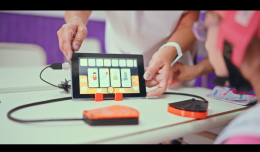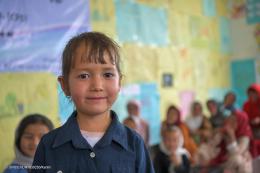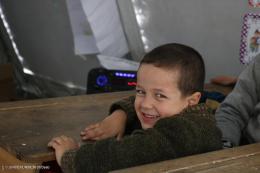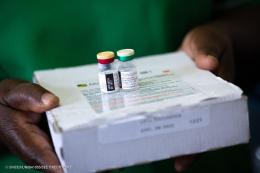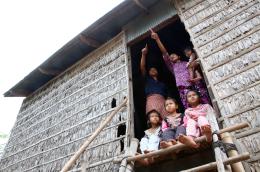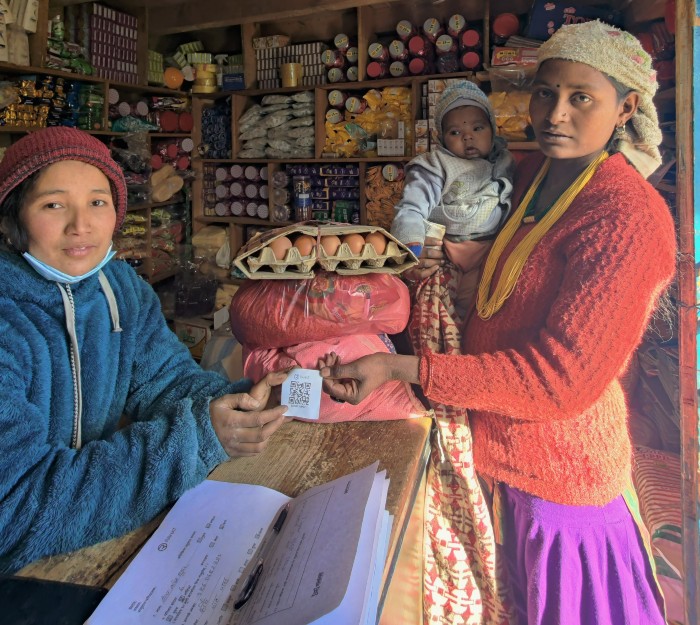
Prototyping
The product design and development processes were an intense learning experience for us. We have upgraded our product design processes in the last 12 months. Our new and refined product design processes help define subsequent decisions throughout the development cycle. Initially, we had used the Metamask version on our agency dashboard which was not so user-friendly, so we have now started using a wallet to log in to the dashboard.
In the first two quarters, our business team was heavily involved with the tech team to map out UI/UX with support from UNICEF. Our social mobilizer app was a successful and efficient outcome of this process. The number of design iterations for the social mobilizer app decreased by 50% in comparison to our design iterations of the vendor app. The structured development and documentation process was also very instrumental in the development of the crowdfunding platform that we worked closely with a third-party vendor in Q4. A robust internal process streamlined our process timings with the vendor.
User/field testing
We’ve been working to optimize our user acceptance testing (UAT) processes. We worked with an external partner to build a native app. Even after a series of dev testing and UAT, we ran into some issues with the application in the actual pilot program. It was clear that we needed to do more homework in every possible environment (e.g., challenges of different kinds and versions of mobile phones). For example, the mobile penetration in Nepal is very high, but still during our pilots we saw that a significant percentage beneficiaries did not have access to feature phones. We thus, included a QR code card to be inclusive of a phoneless population. However, in our tests, we also came across challenges with the camera quality of vendors, creating challenges with the QR codes scanning process. We have now added in a code entry option for vendors who run into scanning issues. Our UAT processes have now been more robust with several testing processes in different environments. Our development of the application has gone through a number of iterations based on valuable input from field testing.
Open source
Our vision has always been doing well by doing good. We believe that creating Open Source software (OSS) helps us create greater social impact. We have started to document more (docs.rahat.io) and follow a continuous integration and continuous deployment (CI/CD) pipeline for our more process-heavy deployments. We have also tried to make most of the Rahat communication transparent through Rahat’s public channel on Discord.
We are embracing the OpenSource culture as we are making our internal projects Open Source soon. Developing in the open has also helped us more effectively engage with our stakeholders, and becoming a digital public good (DPG) has opened new doors for collaboration and other opportunities.
Business models
As an early-stage startup, we struggled with a clear business model. Especially in the last six months of the investment, support from the mentor network helped in building clear business growth and impact metric plans. Also a year ago, we were very heavy on the tech side but lacked considerable planning on network and visibility growth. We have developed a customer persona and a pricing model, and now have a clearer vision of our Total Available Market, Serviceable Available Market, and Serviceable Obtainable Market (TAM, SAM, and SOM) models.
The UNICEF investment helped shore up our credibility and spark interest in our solution, making it possible to collaborate with networks like the Ethereum Foundation, CALP, IDB, Nepal Red Cross Society, Cash Coordination Group Nepal, Practical Action, fellow cohort members, and UNICEF country offices. We are looking forward to our large-scale pilot with UNICEF Nepal in the upcoming months, which we believe will help our solution mature and demonstrate the capacity to scale.
Challenges
Engaging with aid agencies around what can be perceived as a novel solution has taken longer than anticipated. Different aid agencies have different requirements even for implementing pilots with different procurement processes and other logistics limitations. Furthermore, many organizations are unfamiliar with blockchain technology, which interferes with seamlessly adopting the system. Furthermore, the digital divide poses a big challenge, with vulnerable populations still lacking digital literacy and access to feature phones. Our pilots showed that most rural areas in Nepal still don't have internet connectivity and that people are mostly unaware of the benefits of technology and reluctant to use and adopt it. So we conducted digital literacy programs for the unbanked population as well as school students, vendors, and social mobilizers. Our digital literacy programs have become an integral part of our implementation as we look at how we can develop inclusive digital cash and voucher assistance (CVA) programs.
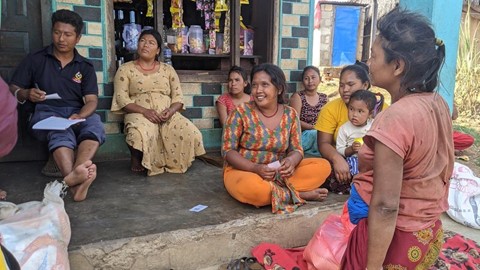
Future collaborators
We are looking forward to continued collaboration with national and international humanitarian organizations and, as a CVA platform, hope we can support UNICEF country offices in their humanitarian work. We are also looking forward to collaborating with local governments and NGOs interested in partnering to use innovative models to reach the most vulnerable. Among many, we are considering organizations like Celo Foundation and ConsenSys Quorum to explore how we can integrate Rahat into their networks and grow.
UNICEF Venture Fund and the Way Forward
In the last 12 months, Rahat has seen a significant leap in the build of a stronger product and a clearer business growth strategy. We at Rumsan, the team behind Rahat, are proud of how we've grown as a company and as individuals. With UNICEF Venture Fund's investment and mentorship support, our team got fantastic opportunities to not only learn and explore but also develop and upskill ourselves as individuals. As an organization, we've grown and are prepared to continue our adventure. From tech to business growth and impact metrics, the sessions have been very helpful for Rahat to grow as a product and for us to grow as a team. We were able to develop precise business growth strategies and impact metric plans that have enabled us to transform into a more scalable project. Kudos to the UNICEF Venture Fund team for their unwavering support and direction, which made our journey easy and successful.
As we wrap up our 12 months with the Fund, we are extremely excited about scaling Rahat in the coming year. Being recognized as a DPG means that Rahat has a stronger potential for adoption/deployment and is growing towards becoming a more scalable project focusing on financial inclusion globally. We look forward to expanding our partners and users across South Asia, and potentially Latin America. We also aim to explore tokenomics for growing Rahat.
Related Stories

AGUA: Revolutionizing Global Collaboration for Funding Transparency (with Growth Graduate Atix Labs)
